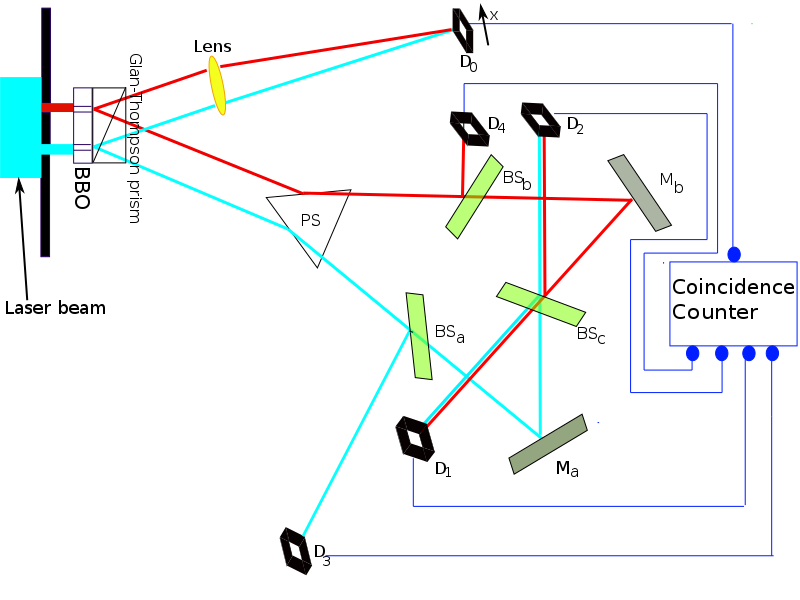Jayjay
Contributor
- Joined
- Apr 7, 2002
- Messages
- 7,173
- Location
- Finland
- Basic Beliefs
- An accurate worldview or philosophy
trying to wrap my head around the delayed choice quantum eraser experiment. There is one thing that I don't quite get, and it's perhaps best illustrated with this picture from the relevant Wikipedia article:

If the beam splitters (which I think are semi-reflective mirrors that let through ~50% of the photons, and reflect the other half) at BSb and BSa are replaced with actual mirrors, what would the pattern be at detector D0? An interference pattern, or two solid blocks, per two different slits that the photons go through?
What if the BS mirrors are removed, and all photons go to the "eraser"? Would there be an interference pattern then?

If the beam splitters (which I think are semi-reflective mirrors that let through ~50% of the photons, and reflect the other half) at BSb and BSa are replaced with actual mirrors, what would the pattern be at detector D0? An interference pattern, or two solid blocks, per two different slits that the photons go through?
What if the BS mirrors are removed, and all photons go to the "eraser"? Would there be an interference pattern then?
